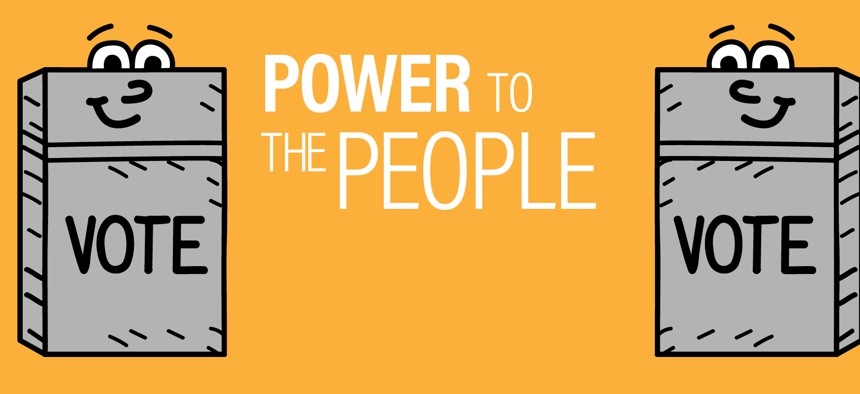In his State of the State address in January, Gov. Andrew Cuomo made a brief plea for changes to improve ballot access in the state.
“At this time of citizen alienation and outrage, the best thing we can do is let people know that their voice is heard, that they matter and that they can and they should vote,” the governor said. “And we should make voting easier, not harder, with same day registration, no-fault absentee ballots and early voting.”
Journalists noted that the reforms were virtually the same as a list of proposals that he had previously rolled out. The question now is whether the governor will be able to make more headway on them this year than in previous years.
Of course, there’s a chance that Cuomo will be able to get only a few measures passed, while others languish for at least another year. If so, which bills should be the top priority – that is, which would have the most bang for the buck?
With that in mind, in this special section we take a closer look at the specific election-oriented policy changes that Cuomo is calling for, alongside other proposals that could increase turnout and voter engagement in New York. Is same-day voter registration more effective than automatic voter registration? How would early or absentee voting compare with longer polling hours or setting up central voting centers?
Additionally, we explore how the changes would impact New Yorkers and who shows up to vote. Which demographic groups would likely boost their turnout? How would the partisan makeup of the electorate be altered?
Which electoral reforms would make the biggest difference?
[[{"fid":"4171","view_mode":"default","fields":{"format":"default","field_file_image_alt_text[und][0][value]":"Election reforms illustration","field_file_image_title_text[und][0][value]":"Election reforms illustration"},"type":"media","field_deltas":{"2":{"format":"default","field_file_image_alt_text[und][0][value]":"Election reforms illustration","field_file_image_title_text[und][0][value]":"Election reforms illustration"}},"attributes":{"alt":"Election reforms illustration","title":"Election reforms illustration","style":"height: 376px; width: 336px; float: left;","class":"media-element file-default","data-delta":"2"}}]]If Gov. Andrew Cuomo and the state Legislature want to expand voting access and enable more participation, some reforms will work better than others, voting rights experts said. And history suggests that not all of Cuomo’s ideas will make it into law any time soon. Based on what experts said data has shown in other states, below is a ranking of potential reforms – from most to least effective – at increasing the size and diversity of the electorate. Read the full story here.
Which party would really benefit from Cuomo’s voting reforms?
Both parties are acting on the assumption – which is widespread among journalists, political activists and elected officials – that larger turnout benefits Democrats. But is it true? The data provides a more nuanced view: Nonvoters or occasional voters do not necessarily fall to the left. Adjusted for demographics, they tend to cluster more toward the middle of the ideological spectrum than regular voters, who are often highly motivated by strong political convictions or partisanship. Read the full story here.
Want more minorities to vote? Make it easier to register.
[[{"fid":"4172","view_mode":"default","fields":{"format":"default","field_file_image_alt_text[und][0][value]":"Voting reform illustration","field_file_image_title_text[und][0][value]":"Voting reform illustration"},"type":"media","field_deltas":{"3":{"format":"default","field_file_image_alt_text[und][0][value]":"Voting reform illustration","field_file_image_title_text[und][0][value]":"Voting reform illustration"}},"attributes":{"alt":"Voting reform illustration","title":"Voting reform illustration","style":"height: 372px; width: 336px; float: left;","class":"media-element file-default","data-delta":"3"}}]]
Two of Cuomo’s least-controversial proposals are to create early voting, which exists in a majority of states and would allow voters to show up at a smaller number of polling places for a week or so before Election Day; and allowing voters to use an absentee ballot without providing a reason for not being able to vote on Election Day. These moves could bolster turnout, but alone, they would be inadequate. To significantly expand the electorate, the state Legislature must also embrace Cuomo’s proposals to adopt automatic voter registration, in which eligible voters are registered any time they present proof of residence to a state agency, such as at the DMV, and same-day voter registration at polling places. Read the full story here.


